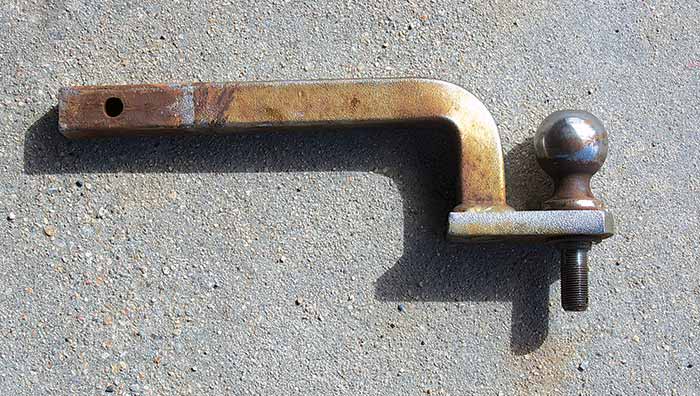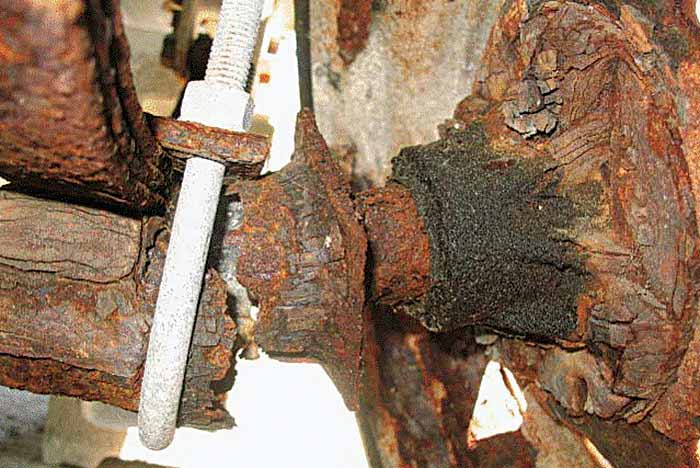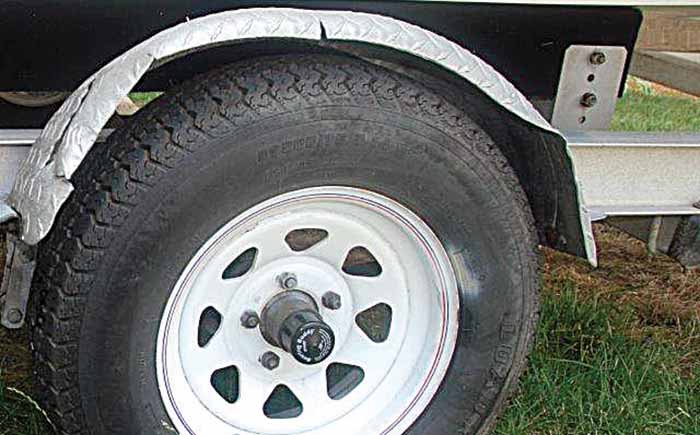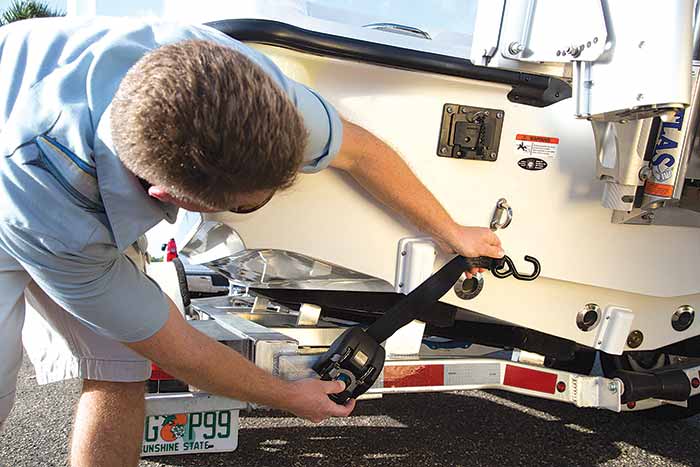Advertisement
Keeping the thing that carries your boat to the water working well might be the best maintenance you ever do for your boat.
How Do I Work On My Trailer?

Photo: Billy Black
This is a common question — how do you work on the trailer without the boat on it? Quick fixes can be done at a launch ramp that will allow you to tie up for a couple of hours. Launch the boat, tie it up, and then work on your trailer at the launch ramp, or if you're comfortable with the boat left at the location, take it home and do the work there. The other solution is blocking. A boatyard can block your boat by lifting it off the trailer and then blocking it just like any other boat on land. Some use a forklift to lift it off with slings while others jack it up and slowly pull the trailer out from under the boat, leaving the boat on blocks and/or stands. This method will cost you, of course, but will give you all the time you're willing to pay for to work on your trailer.
I've been called to clean up "at-home blockings" where owners used car jacks and cement blocks in an attempt to get the trailer out from under the boat. Don't do it! Between the soft ground, jacking in the wrong place, and causing cracks in the hull, as well as using old crumbling blocks, there are many opportunities for this practice to go horribly wrong, resulting in injury, and generally an insurance claim.
— John Adey
Galvanized Trailers & Bottom Wash
Using an acid bottom wash with a galvanized trailer causes nasty white streaks and can compromise the galvanized coating on the trailer. Cover the trailer frame with an inexpensive drop cloth, and then start your bottom wash. For parts you can't cover, make sure they are continuously washed with fresh water.
— John Adey
Swing-Away Tongue

Photo: Dan Armitage
Many new trailers come with a swing-away tongue option. You may have a 19-foot boat, but end up with a package measuring over 25 feet, too long for many garages. The swing-away tongue option allows you to pull a pin and fold away the excess tongue that exceeds the length of the bow, often giving you just the extra space you need to easily close that garage door.
— John Adey
Flip Your Drawbar

When you're pulling your trailer down the highway, you want it as horizontal as possible — that is, parallel with the road. On vehicles with high bumpers, "drop" drawbars, or L-shaped drawbars, can lower the height of the trailer's tongue by several inches. If you tow your boat with different vehicles (particularly vehicles with different bumper heights) a good trick is to flip the drawbar by 180 degrees. A drawbar that gives you a 2-inch drop can also give you a 4-inch rise.
— Tim Murphy
Avoid Corrosion

Most insurance policies don't cover rust.
Corrosion is your trailer's constant enemy. Spray all parts that aren't galvanized or made of stainless steel (U-bolts, nuts, leaf springs, etc) liberally with a rust inhibitor such as CRC or Boeshield T-9. One problem to watch out for is corrosion inside the axle tube as a result of trapped water, which can lead to a catastrophic failure of the axle. Verify that the axle is completely sealed, or if not, that it drains properly after each use.
— Frank Lanier
Protect Your Investment

I once had a customer who never noticed that the bunk bracket nuts had loosened and the distance between the fender and the boat bottom became smaller and smaller until finally the boat squashed the fenders onto the tire and shredded the tire on a long trip, far away from home. A boat on a trailer is subjected to forces different from those in the water. Just like protecting the boat while it's in a slip with fenders and proper dockline lengths, you need to protect it on the trailer. Check the fit after each trip. Did the bunks move? Is something rubbing against the boat? Is a roller worn or marking the boat? Keep a mental note of the placement of the boat and the tolerances and, if they change, check everything out immediately.
— John Adey
Boats & Ratchet Straps

Ratchet straps make securing a boat to a trailer much more convenient. The over-use of ratchet straps can cause substantial damage. A commercial two-inch ratchet strap can exert 3,000 pounds when fully tightened! Think about what this can do to the boat/trailer combination. Overtightening can cause the bunks or rollers to push into the boat bottom and cause cracks or deformation of the boat structure. Use ratchet straps properly, usually two at the transom eyes, and one to take the bow-eye load off the winch by running a strap from the bow eye straight down to the trailer tongue. Some prefer a strap amidships as well. This one, when overtightened, can do the most damage, so be conservative as you secure it. Bottom line, if it plucks like a guitar string, it's probably a bit too tight!
— John Adey
Alternative Bunk To Carpet Or Rollers

Bunk boards for trailers, with Teflon-type hard covers instead of carpeting, are often cheaper than a roller replacement, last longer, are easier to install and maintain, and can be placed to align with the boat's bottom contours, thus making it easier to get the boat on the trailer.
— Tom Neale
